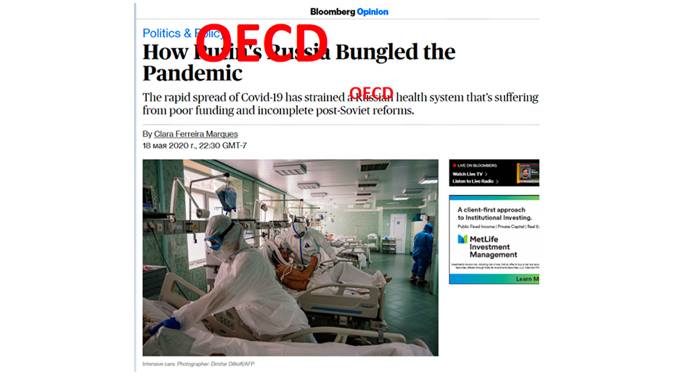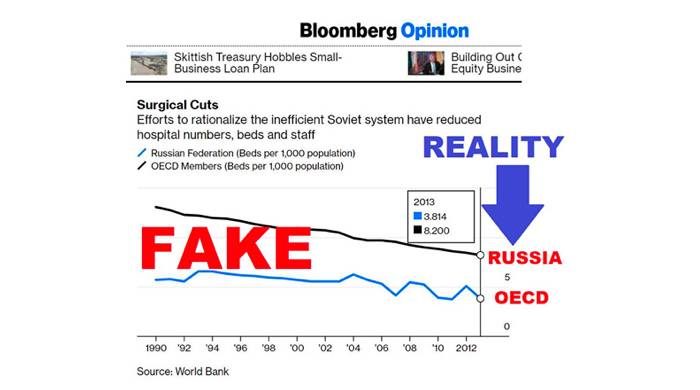
Everything's fine if it fits the narrative, Bloomberg Opinion editors might have thought when they misquoted World Bank statistics on the number of hospital beds per 1,000 residents, including the misrepresented data in a Russia-bashing op-ed by Clara Ferreira Marques, titled 'How Putin's Russia Bungled the Pandemic'.
Taking a swipe at Russia's efforts to upgrade the Soviet healthcare system to make it less cumbersome and more effective, the piece argued that the endeavor failed, only leading to a drop in hospitals, beds available, and doctors.
To back up the premise, the article featured a graph claiming to be based on 2013 data from the World Bank. However, according to the World Bank's actual stats, while Russia had over twice as many beds in 2013 (8.2 versus 3.8 per 1,000), the initial version of the Bloomberg story had Russia lagging far behind the OECD countries by the same margin.
The blunder did not go unnoticed by the Russian Embassy in the US, which accused Bloomberg of promoting a new barrage of "politicized allegations" with "fake" stats.
The embassy said in a Facebook statement:
"We demand that Bloomberg Opinion refute, apologize and respect its own customers. We are convinced that readers and viewers of the leading American media deserve verified, but not deliberately distorted, information."Several hours after the embassy voiced its protest, Bloomberg Opinion amended the article, embedding a correct version of the graph instead of the misleading one.
The blunder came just days after Bloomberg ran another story about Covid-19 and Russia that raised some eyebrows. "Experts Want to Know Why Coronavirus Hasn't Killed More Russians," the initial headline stated, in what many commenters saw as the outlet's disappointment in the country's relatively low death toll. It has since been changed twice to sound more neutral.
Other Western media outlets seem to be taking the same misleading doom-and-gloom approach in covering Russia's fight with the epidemic. Last week, CNN declared Moscow "devastated" based on the number of identified cases, which came with increasingly large-scale testing.
Meanwhile, the New York Times and Financial Times seem to imply that the Russian government is covering up the damage done by the epidemic with the creative use of official mortality statistics. The mystery of Russia's low death toll was thus "solved" by the Western press. But when the Russian Embassy in the US tried to have the New York Times print comparative statistics for Moscow, New York City, and London to give readers some proper context, it refused, according to the diplomats.





Reader Comments
to our Newsletter